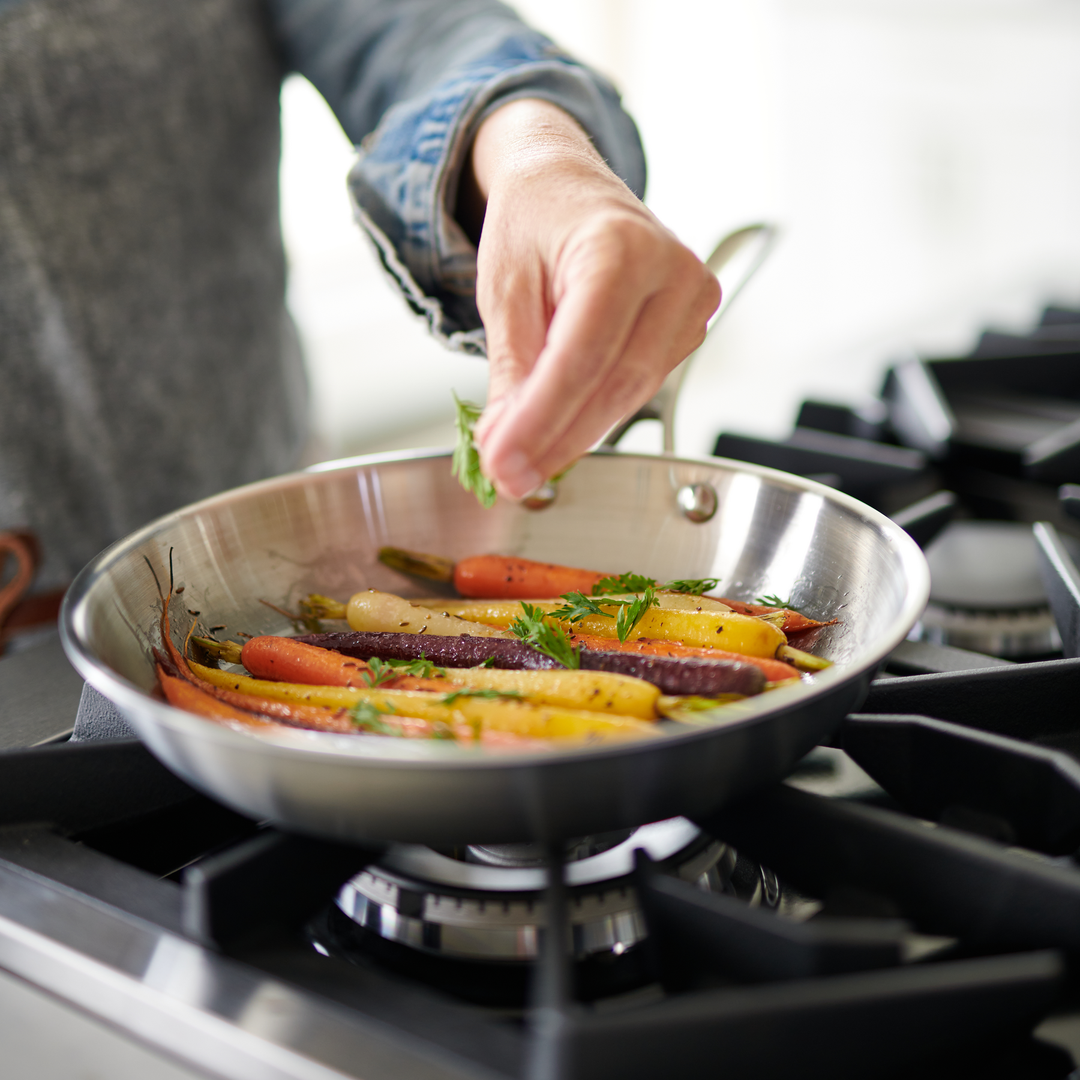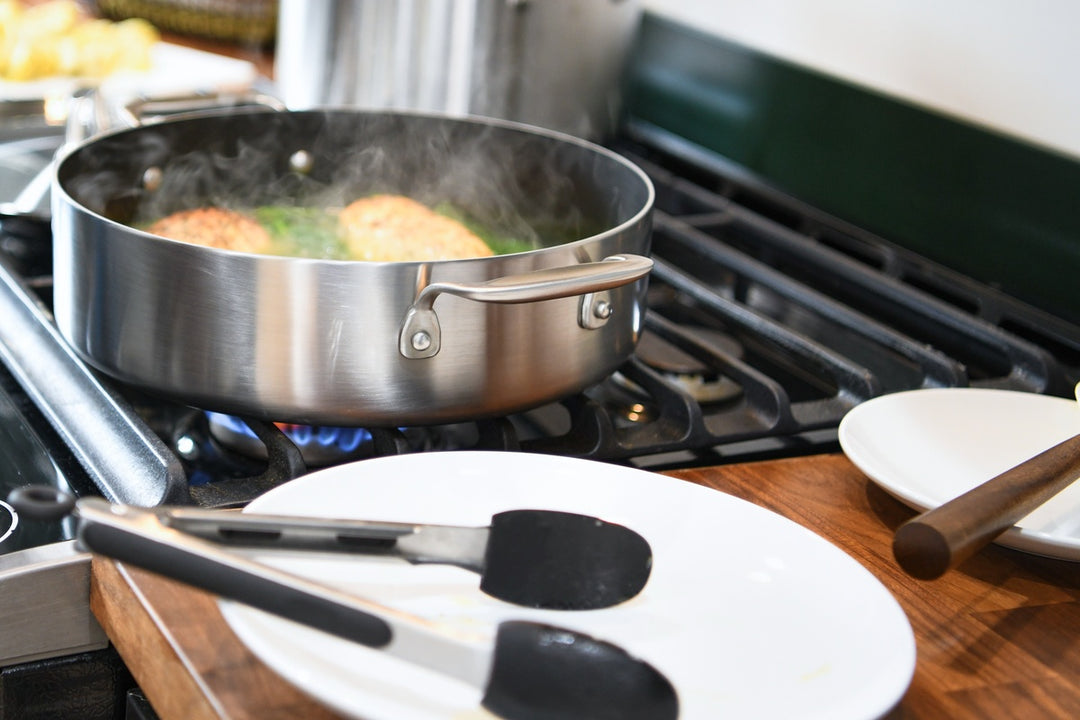Induction Cooking 101

One of the biggest benefits of our nonstick and stainless steel cookware is that you can cook anywhere with them — from gas and electric to induction cooktops.
Induction cooking is similar to electric, but how your food cooks is completely different. Electric cooktops use radiant or thermal heat, whereas induction uses an electromagnetic field to heat your cookware directly.
Why does this matter? Induction cooking is a complete time-saver. In fact, you can boil water 2-4 minutes faster than with electricity or gas. That means it’s more energy-efficient, too. And when you take your pot off the cooktop, the cooking surface is cool to the touch (this major safety feature makes induction cooking especially popular for those with littles at home).
How Induction Works
Induction cooktops turn your pots and pans into active heating elements through a process called magnetic induction. It sounds techy, but what this means is that there’s an electromagnetic field beneath the glass surface that reacts with your cookware. This causes heat to build up where it’s then transferred to the food inside your pan.
But you can’t just throw any old pot or pan onto an induction cooktop. They need to be made with a magnetic material like stainless steel. To tell if your cookware is induction compatible, just try to put a magnet on the bottom of your pan. If there’s a strong hold, you’re good to go (but if the magnet is softly grabbing the pan, you may not have the best luck cooking on induction).
Tips & Tricks
When you’re shopping for induction-friendly cookware, always look for pieces with solid, flat bottoms that create complete surface contact between the cookware and the stovetop.
All of our cookware is designed with flat bottoms, so you know they’ll work with your induction cooktop. They’re also made from durable tri-ply stainless steel that cooks evenly and quickly.




